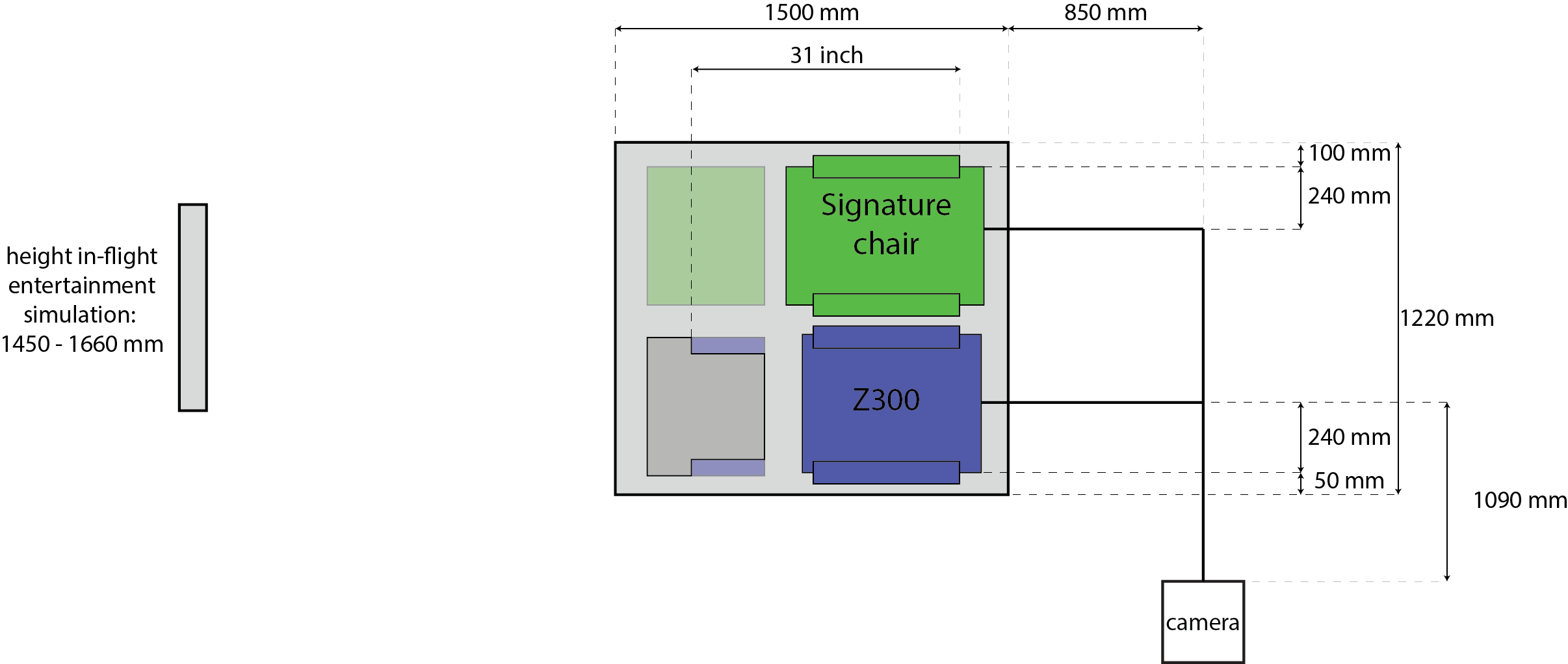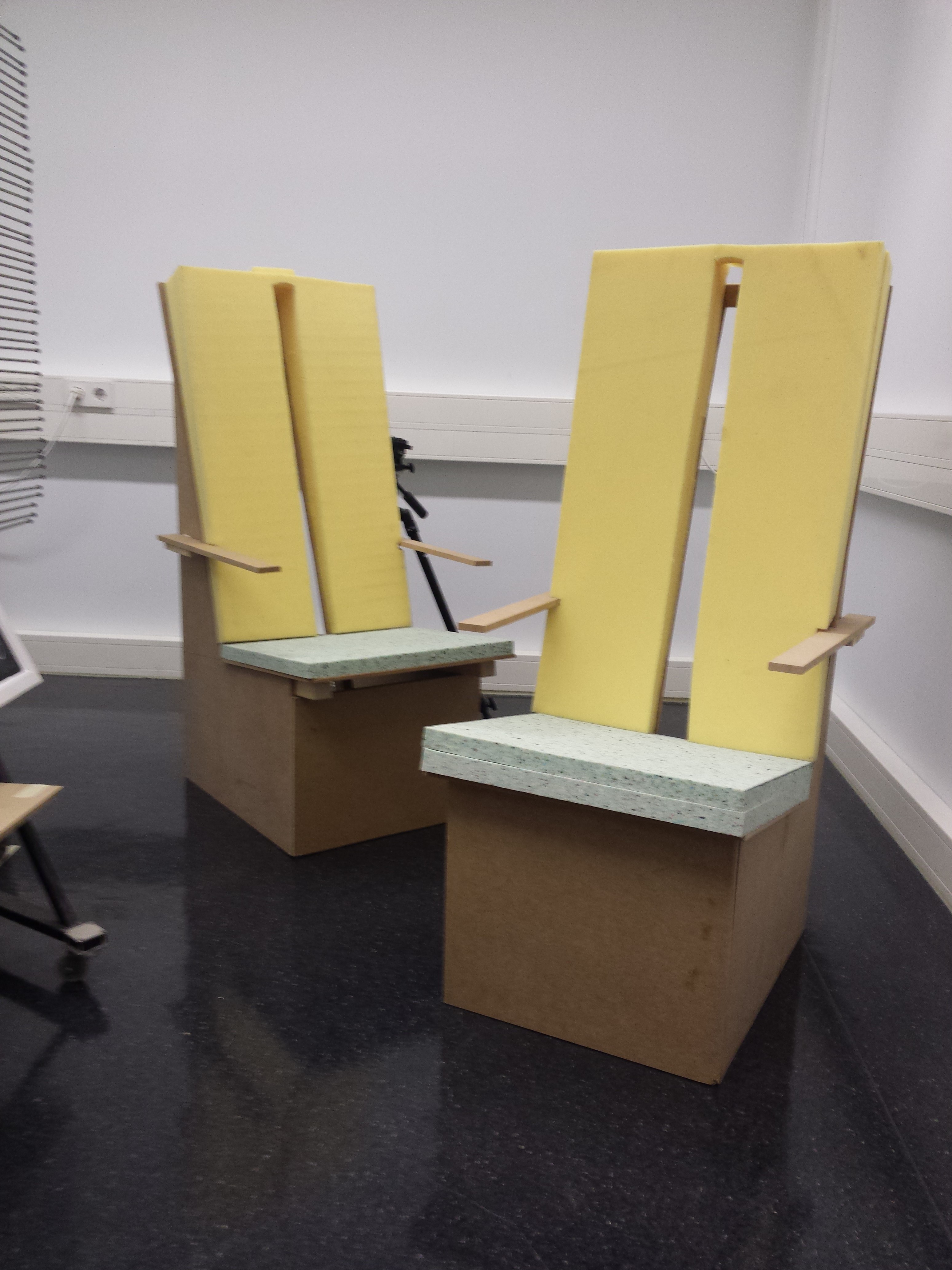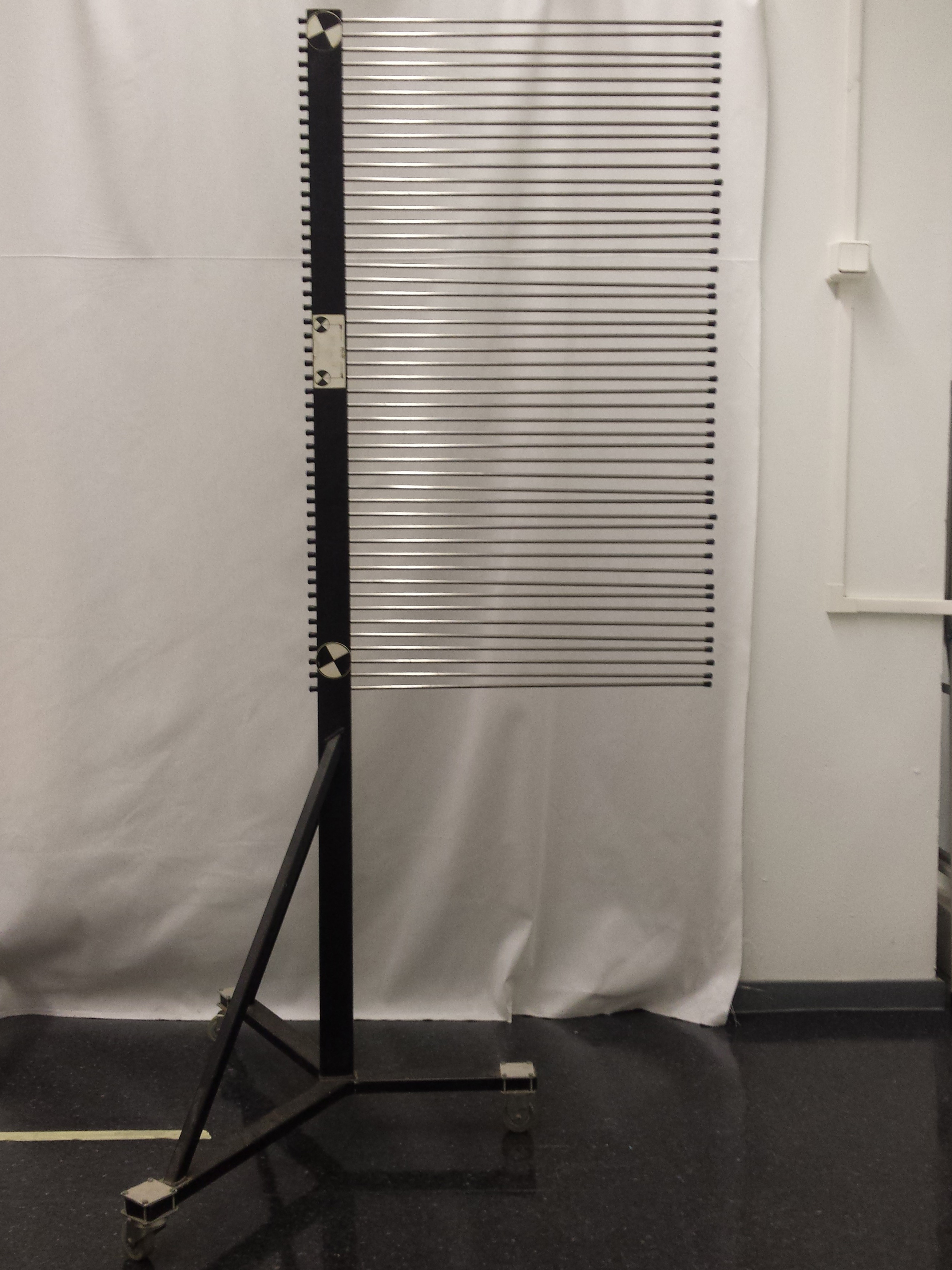An estimation of the human head, neck and back contour in an aircraft seat
In this research, the head, neck and back contour of a human while sitting in two different aircraft seats, performing two tasks (namely watching in-flight entertainment (IFE) and working on a laptop) are estimated by using a kyphometer.
The research question was to find if anthropometric properties, the design of the chair and the performed activity has influence on the back contour of a person. This research indicates that the maximum variation of these contours occur on the upper back, neck and head. By dividing the data in four groups, based on the upper body length, the height at which significant difference occurs was determined.
Test setup

Peter Vink
- +31 (0)15 27 81438
- P.Vink@tudelft.nl
-
Room 32-B-3-160
"Sustainable productivity can be reached by adapting environments to human and organisational characteristics."
Students
- N. Nijholt
- T. Tuinhof



